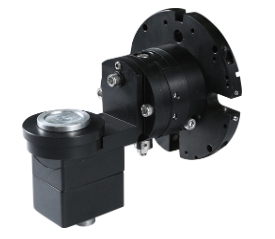
Rotating the sample stage doubles the experimental effect
2025-04-30 09:35The rotating sample holder is an experimental device used for precise control of sample orientation, widely used in fields such as X-ray diffraction (XRD), spectroscopic analysis, and material testing. By rotating the sample, preferred orientation can be eliminated, measurement accuracy and repeatability can be improved.
1. The core function of the rotating sample holder
(1) Eliminating preferred orientation: By rotating the sample plane (β axis), diffraction errors caused by coarse grains or texture are reduced, ensuring the reproducibility of diffraction intensity.
(2) Multi position measurement: Conduct multi angle measurements on uneven samples (such as grains), average the data at different positions, and improve the accuracy and repeatability of the results.
(3) Automated operation: Some devices support automatic rotation and sample change to improve testing efficiency (such as XRD fully automatic rotating sample holder).
2. Technical characteristics of rotating sample holder
(1) Structural design:
Drive mode: precise rotation is achieved through mechanisms such as motors, shafts, gears and racks, and some equipment is equipped with servo motors and encoders to correct the speed.
Clamping device: The sample is fixed by a compression clamp, card slot, or clamping block, and the inner side is partially clamped with a rubber layer to adapt to different materials.
Rotation parameters: The rotation speed can reach 1-60RPM, with a minimum step width of 0.1 º, and supports continuous or step modes.
(2) Adaptability:
Can be installed in XRD instruments, optical/electrical testing systems, etc., supporting multiple sample holders (such as reflective probes, in-situ battery accessories, etc.).
Some devices support 360°rotation and are compatible with various measurement requirements such as optics and electronics.
3. Application scenarios of rotating sample holder
(1) X-ray diffraction (XRD):
Used for analyzing samples with texture or crystallography (such as metal materials, thin films), to eliminate the influence of preferred orientation on diffraction results.
The fully automatic model can improve the efficiency of multi sample testing, reduce the number of door opening and closing times, and extend the lifespan of equipment.
(2) Spectral analysis and material testing:
Used for measuring uneven samples (such as grains) with reflective probes, by rotating and averaging spectral data at different positions. Adapt to in-situ high and low temperature environments, and support complex experimental conditions.
(3) Multi functional experiment:
By combining probes, electrical or optical sample holders, comprehensive testing of electrical characteristics, surface morphology, and other features can be achieved.
The rotating sample holder solves the measurement error problem caused by the preferred orientation of traditional fixed sample stages by accurately controlling the sample orientation. At the same time, its automation and multi scene adaptability make it a key tool in fields such as XRD and spectral analysis. The specific selection needs to be matched with the corresponding model based on experimental requirements such as rotation accuracy, sample type, and automation level.

